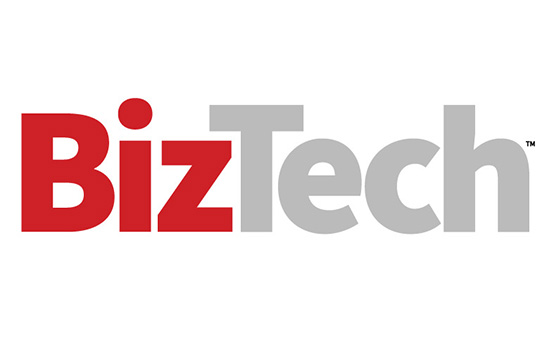Have you tried to do some spring cleaning in your garage recently? It hasn’t seen a car parked inside for years because it’s stuffed to the gills with junk, and you have no idea where to start.
That feeling of being overwhelmed is something the IT staffs of financial institutions are feeling every day.
The data infrastructures of financial institutions are extremely complex. Data is spread among multiple clouds, both externally and internally. Points of entry into their networks are growing. And the sheer amount of data, including logs and other information that needs to be observed to keep the network safe and infrastructure running, can become too much for IT personnel to manage.
Cyberattacks have gotten more sophisticated and damaging, and while data loss is always a fear of IT security managers, the bigger concern is downtime. For example, a survey by the analytics company New Relic found that 62% of respondents cited outages cost their companies $1 million or more per hour.
This means that the ability to observe and analyze networks in real time is of utmost importance. But that is becoming more difficult to do: Only 1 in 4 organizations reported achieving “full-stack observability” in the New Relic survey.
Click the banner below to keep reading stories from our new publication, BizTech: Financial Services.
Multiple Infrastructures Complicate Data Observability
One reason is that companies have their data spread out over multiple infrastructures.
In its State of Observability 2024 report, Dynatrace surveyed hundreds of companies across multiple regions and found the average multicloud environment spanned 12 different environments, including large-scale cloud providers, local Infrastructure as a Service providers and private servers. Of the technology leaders surveyed, 84% said that complexity made it more difficult to protect their infrastructures from attacks.
The result in this kind of environment is an overwhelming amount of data to sift through. One example of the avalanche of data cited by Dynatrace was log analytics.
“The costs of storing the increased volumes of this data over the long term have begun to overshadow the value organizations can unlock from querying it,” the authors of the report note. “As a result, teams are often forced to decide which logs to retain for real-time analytics and which to discard or archive in lower-cost, less-accessible storage. This hinders organizations’ ability to drive more automation and smarter decision-making.”
To manage these ever-increasing needs, IT organizations are turning to various tools to make observability more automated, giving IT staff only the information they need to keep their infrastructure and data safe from attacks and minimize downtime.
Click the banner below for hybrid infrastructure, data protection and storage solutions.
Deploy Comprehensive Network Monitoring Tools
Network monitoring suites such as Cisco ThousandEyes or SolarWinds Network Performance Monitor can give IT staff a look at device health, potential bottlenecks and traffic patterns. That last item is key, because it gives network managers the opportunity to see if anomalous traffic is the result of a cyberattack.
These products give security staff insight into their networks on a granular level, across both cloud and on-premises environments. Looking to see how an application performs on various networks in your environment? These tools can give you that information.
They also provide a visual layout of the network, help administrators proactively isolate and cut off suspicious activity, and deploy artificial intelligence to help optimize resources.
FIND OUT: What is shadow data and how can organizations avoid it?
Use AI-Driven Predictive Analytics To Prevent Failures
Companies such as Splunk and VMware by Broadcom can provide AIOps solutions to help network managers break through the noise of information and provide predictive analytics to help staff fix failure points before they cause problems.
But the kind of artificial intelligence that is deployed is key here. Probabilistic and training-based solutions, which were the earliest machine learning products to market, involved a lot of worker hours, with employees inputting information to help the systems learn, and it didn’t yield satisfying results. According to Dynatrace, companies are now using a combination of AI methods to analyze and predict what might happen.
25%
The share of organizations reporting “full-stack observability”
Source: newrelic.com, “State of Observability,” March 26, 2025
The best solutions use not just generative AI but also causal and predictive AI. Causal AI creates cause-and-effect relationships within the data it analyzes. Predictive AI forecasts trends or outcomes that might happen in the future.
“Generative AI assistants are the key to democratizing observability domain knowledge,” says Hao Yang, vice president and head of AI at Splunk, in that company’s 2024 State of Observability report. “The ability to ask questions in natural language unlocks a completely new layer of insights and intelligence.”
RELATED: The financial solutions from CDW that can fortify data protections.
Consolidate Data From Various Sources
If all of the data that needs to be analyzed is centralized, using management systems such as Cisco Catalyst Center or HPE Aruba Central, then financial services institutions can spend less time and fewer resources coordinating efforts between departments or project silos.
“In organizations with immature observability practices, figuring out where an issue is coming from involves putting everyone in a war room. Putting hundreds of people on a conference bridge is a really bad way to solve problems, and leading teams are finding ways to rise above that,” notes Annette Sheppard, Splunk’s director of product marketing for AIOps, in the Splunk report.
Splunk estimates that companies that do best on observability receive $2.67 for every dollar they spend on the effort, citing improvements in problem detection time. Combined with the AIOps and network monitoring tools described above, data management systems can help IT staff cut through the mountains of data that can be generated by systems spread out over a diverse infrastructure.













